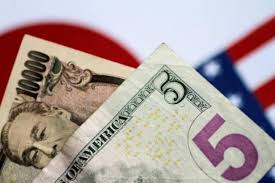The U.S. dollar edged higher on Tuesday as financial markets braced for upcoming U.S. inflation data, with traders keenly watching the Consumer Price Index (CPI) scheduled for release on Wednesday. The yen hovered near a two-week low, raising concerns about potential intervention by Japanese authorities.
Market participants are particularly focused on the U.S. inflation figures to gauge the Federal Reserve's next steps, following softer-than-expected labor market data and recent comments from Fed officials suggesting a pause in rate hikes. The dollar index, which measures the greenback against six major currencies, remained stable at 105.19, having slipped almost 1% in May.
The U.S. Producer Price Index (PPI) data released on Tuesday showed mixed results, causing initial volatility in the dollar. The PPI revisions led traders to speculate on a less aggressive CPI print, which could influence the Fed's monetary policy stance. "U.S. inflation data for April is likely to be the most important data point of the week," said Antje Praefcke, FX analyst at Commerzbank, highlighting the market's sensitivity to economic indicators.
Money markets have adjusted their expectations for Fed rate cuts this year, now pricing in about 40 basis points of easing compared to the 150 bps anticipated at the start of 2024. The CME FedWatch tool indicates a roughly 50% chance of a rate cut by September.
Meanwhile, the yen's recent weakness, last trading at 156.45 per U.S. dollar, has sparked speculation of intervention by Japan's Ministry of Finance. The yen's decline reflects the widening yield gap between Japan and other major economies. Japanese Finance Minister Shunichi Suzuki stated that the government would closely collaborate with the Bank of Japan on foreign exchange matters to avoid policy friction.
In other currency movements, the euro remained flat at $1.0797 but has gained 1% against the dollar this month. The British pound experienced sharp declines before stabilizing at $1.2556, influenced by Bank of England Chief Economist Huw Pill's remarks suggesting potential rate cuts over the summer. Despite this, data showed British wages grew more than expected, though the labor market showed signs of cooling.
The Chinese offshore yuan traded near a two-week low after U.S. President Joe Biden announced steep tariff increases on Chinese imports, including electric vehicles and computer chips. The offshore yuan was last flat at 7.2408, following earlier declines.
The latest PPI data indicated that monthly headline PPI rose 0.5%, while yearly headline PPI accelerated to 2.2%. Core PPI, excluding food and energy, jumped 0.5% monthly, with a stable yearly increase of 2.4%. These figures provide critical context for the upcoming CPI release, which is expected to show core consumer prices rising 0.3% month-on-month in April.
On the political front, the Qatar World Economic Forum began on Tuesday, with global leaders set to discuss economic issues throughout the week. Additionally, key Federal Reserve figures, including Governor Lisa Cook and Chairman Jerome Powell, are scheduled to speak, with markets eagerly awaiting Powell's comments for further insights on the Fed's policy direction.
Despite the mixed economic signals, U.S. equities reacted negatively to the PPI data, reflecting broader market uncertainty. The benchmark 10-year U.S. Treasury yield traded around 4.49%, indicating a cautious outlook among investors.
The dollar index remained above 105.00, with traders looking for clearer direction from either Powell's remarks or the CPI data. Key resistance levels for the dollar include 105.52 and 106.52, while support levels are noted at the 55-day and 200-day Simple Moving Averages (SMAs) at 104.54 and 104.25, respectively.






